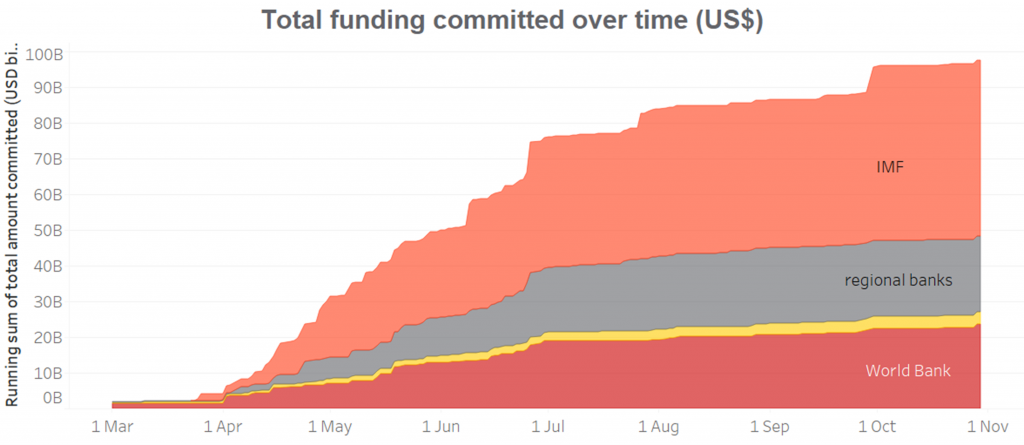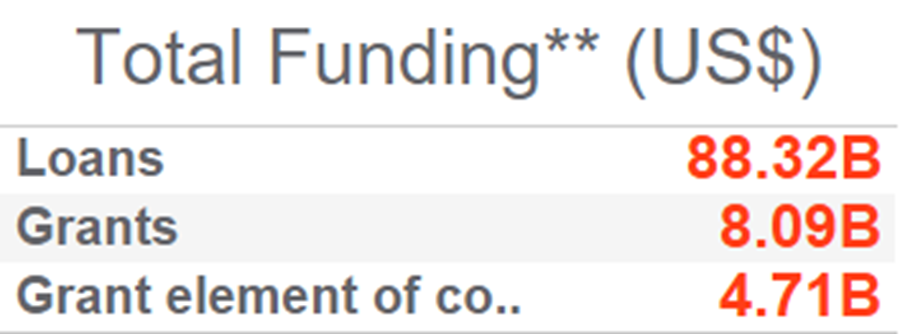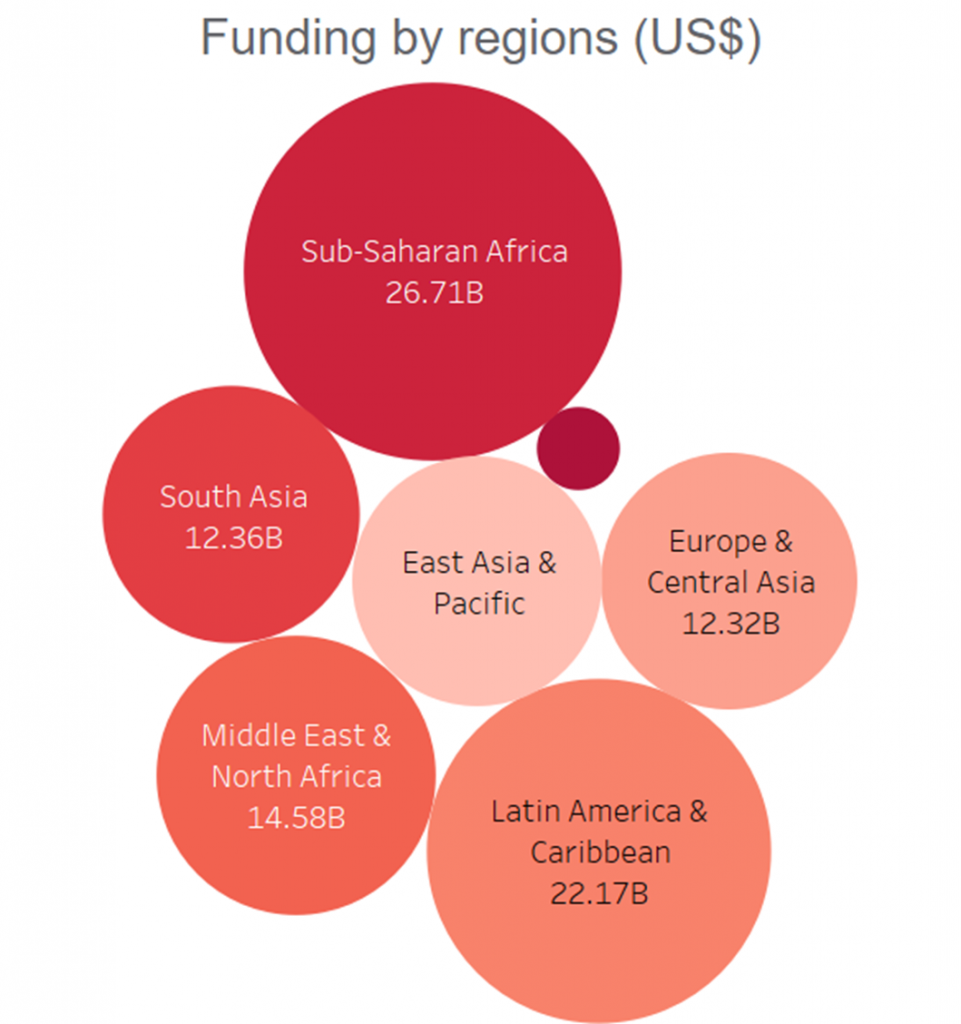Workstream 2: Action & Implementation
Enable effective action and implementation of high-quality Climate and Disaster Risk Finance and Insurance solutions in poor and vulnerable countries
Centre for Disaster Protection: Lessons from Tracking Covid-19 Funding
By the Centre for Disaster Protection
The Centre for Disaster Protection has been tracking global humanitarian and development funding in response to Covid-19 to find out the extent to which the current global-crisis financing system is fit for purpose, and any aspects that need to change. The main challenge identified by the Centre is the lack of prearranged financing plans, resulting in an imbalance in how the funding has been allocated across countries.
The Centre for Disaster Protection works to change how the world prepares and pays for disasters because identifying, planning for and financing disasters before they strike saves lives, reduces suffering and protects livelihoods and economies, especially for the poorest and most vulnerable communities. The Covid-19 crisis is an example of why a coordinated and timely response is crucial in reducing the potentially devastating impact of a disaster.
Starting in April 2020 the Centre has been tracking international funding flows triggered by the Covid-19 crisis. The aim is to get a better understanding of where the needs remain unaddressed under the current crisis financing system and what changes are necessary to reach the poorest countries and most vulnerable populations when a disaster strikes.
The Centre analyzed funding by the International Monetary Fund (IMF), the World Bank, the Asian Development Bank, the Inter-American Development Bank, the African Development Bank, the Islamic Development Bank and funding channelled through the United Nations Covid-19 Global Humanitarian Response Plan. It has tracked all flows to low and middle-income countries that can be considered part of the Covid-19 response from these organizations.
Entering the isolation unit at Connaught Hospital Freetown, Sierra Leone
The Centre’s analysis of this funding data resulted in several key findings:
Large amounts of money have been committed by these international institutions at great speed (USD 87 billion between March and September), with the IMF representing the largest flows. The speed of actual disbursements largely followed this trend, resulting in a faster funding response than in any other crisis.

The vast majority (93%) of the funds committed are loans. These are mainly on concessional terms, with a grant element making up 5% of the total loans by the World Bank and the IMF.

Taking into account the expected poverty impacts of Covid-19, the analysis shows that funding is not targeted at countries that need it most. Countries with higher expected poverty impacts and with higher pre-Covid-19 poverty levels have received less per capita. This can be explained by the fact that richer countries are better able to repay loans and can therefore access money more easily.

The Covid-19 crisis caused a lot of immediate needs in April. Only financing that was prearranged has been able to arrive in time to address these needs. Catastrophe-contingent loans that had been put in place before the crisis, for example, the World Bank’s loans with a Catastrophe Deferred Drawdown Option, were the only type of financing that was able to disburse this early.

The way the international community responded financially to this global crisis highlights certain design flaws in the current system. If they are to be well prepared for disasters, countries need access to good development insurance. Large amounts of loans alone are not enough to ensure a good crisis response and protection against shocks for poorer countries is another crucial ingredient.
The Centre is calling for greater attention to disaster preparedness, which is key to ensuring a more efficient reaction to disasters, including a more equitable allocation of funds. Instead of a begging-bowl approach to funding disasters, the international system needs to work together to prepare for future crises with appropriate financing products and equitable allocation rules. Only then can lives and livelihoods be better protected.
This work carried out by the Centre’s Chief Economist Ruth Hill, Research Assistant Michèle Plichta, Graduate Intern Yi Yang and Dillan Patel from the Government Actuary’s Department includes two blogs, data visualization, including data by country and full data sets to download. These findings are being used to inform ongoing discussion and decisions on funding the current pandemic and to plan for future disasters. They form the basis for a recent article on the equity of the response in the New Statesman and were the basis for an assessment of the Covid-19 response in the Development Initiatives Global Humanitarian Assessment Report 2020. You can keep up with the Centre’s new findings by going to the ‘Funding Covid-19 response‘ section on its website.
